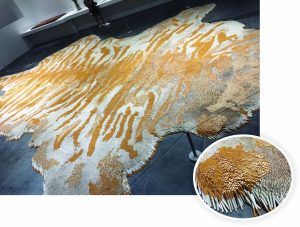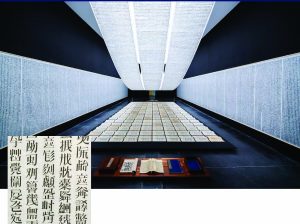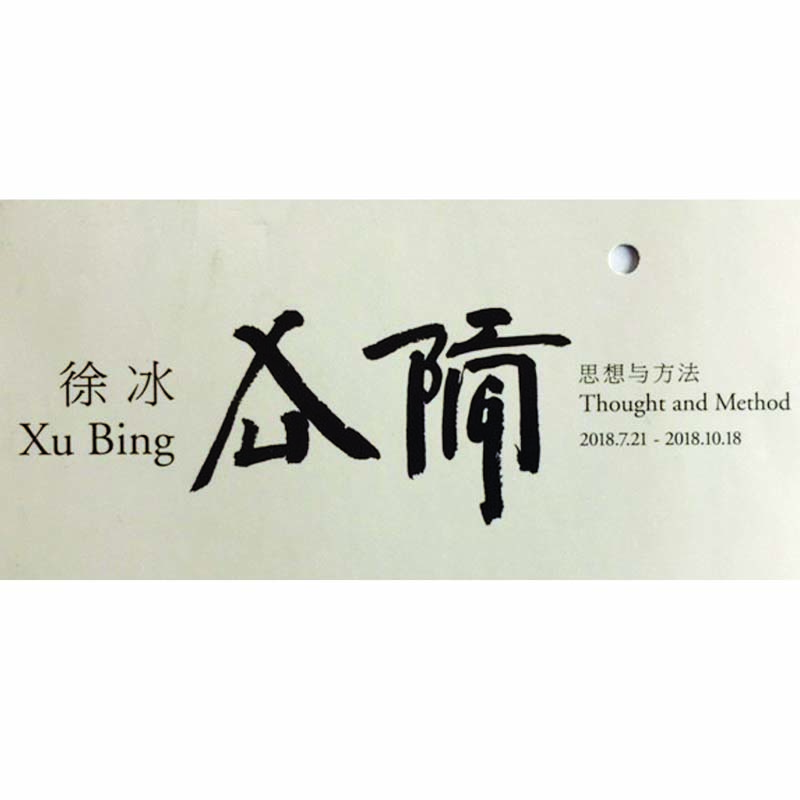
What do you do with 660,000 cigarettes so you don’t get emphysema? What does really mean? Do ghosts put up a Great Wall in your path?
Chinese contemporary artist Xu Bing (徐冰) turns these conundrums, and more, into art works. His works can be seen at the UCCA (previously known as the Ullens Center for Contemporary Art) at Beijing’s trendy and popular 798 Art Zone in the exhibit, “Xu Bing: Thought and Method,” ongoing until Oct. 18.
This native of Chongqing is one of China’s most significant contemporary artists. After receiving a Master of Fine Arts degree from the Central Academy of Fine Arts in Beijing – where he now serves as vice president – he moved to the United States in 1990 amid political pressure and artistic restrictions following the Tiananmen protests of 1989.
He was awarded the distinguished MacArthur Fellowship in 1999 and received an honorary doctorate degree from Columbia University. He returned to China in 2008 and presently resides in Beijing.
His retrospective at UCCA features 60 of his most significant works, including prints, installations, calligraphy, drawings and film (“Dragonfly Eyes,” edited from 1,000 hours of actual surveillance videos). The exhibit includes some of his milestone works, including the return of “Book from the Sky,” which opened the UCCA in 2007. This work took over four years, from 1987 to 1991, to complete.

Xu’s invention of fictional 4,000 Chinese “characters” look like traditional Chinese characters, but actually mean nothing, was painstakingly hand-carved on thousands of movable type blocks. These were then printed on rolls of paper, and the art work is made up of scrolls hung from the ceiling and mounted on walls, as well as sheaves of printed pages arranged like religious texts.
People have tried to “read” the work, or tried to at least find one “real” character – without success.
In “Ghosts Pounding the Wall (1990-1991),” Xu and a team of assistants used traditional methods to make 29 rubbings of the Great Wall at Jinshanling, which measures 32 meters wide and 15 meters tall when assembled. The title, according to his website, refers to the phenomenon known as “ghosts building walls,” when people walk around in circles because of “walls” thrown up by ghosts to obstruct their path.
From 1999 to 2011, Xu embarked on the “Tobacco Project” to focus on economic and geo-political concerns, “tracking the movements of international capital during the 20th century, connecting North Carolina to Shanghai, American cigarettes and Chinese markets.” In “Honor and Splendor,” 660,000 sticks of Fu Gui (Wealth) brand cigarettes are stacked against each other to form a floor sculpture that, when you first see it, looks like a tiger rug. The patterns are achieved by using both ends of the cigarettes.
Other works in the exhibit are equally thought provoking, some more than others, while some works are visual gems to be admired and savored.
The UCCA – and indeed the entire 798 Art Zone – is definitely worth a visit on your next trip to Beijing.
